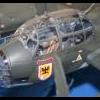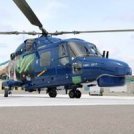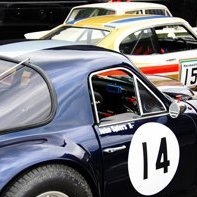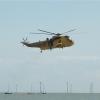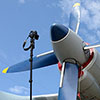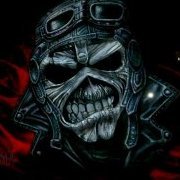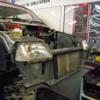Search the Community
Showing results for tags 'HASEGAWA'.
-
Hi! Here's my latest build. The model was built OOB, and painted using Vallejo and Tamiya Paints. Any comments appreciated Best regards Rune Haugen Norway
- 3 replies
-
- 6
-

-
- ticonderoga
- hasegawa
-
(and 2 more)
Tagged with:
-
Just a quick question for you folks out there that have (or have built) one of Hasegawa's B-24J offerings. I've done some Interwebs searching and it seems like, but I'm not certain, that in the B-24J boxing there are ample parts to support a B-24D creation - mainly via Hasegawa's engineering of the forward clear nose section of the fuselage. Can anyone confirm this? The intent, is to create a GR V (Canada) by adding the relative aftermarket bits and bobs (Dumbo Radome, Leigh Light, etc.) As always, any/all input is welcome. Cheers, Dave
-
I was walking through my local hobby shop and spied this lovely little kit. Since I am in awe of the build Nigel Heath is doing on the regular Hasegawa Osprey (link is here http://www.britmodeller.com/forums/index.php?/topic/234970276-172-hasegawa-mv-22b-osprey/), I thought I would give him a tongue in cheek run for his money with this kit. I will show him eggzactly what his build is missing in detail and authenticity. The obligatory box art. And the sprues, in two colors even! I really like how they packaged the canopy and wish they would do this on all kits. If every manufacturer did this I wouldn’t have to polish out so many scratches and/or cracks. First up the cockpit It is loaded with details, right? Who needs photo etch with this much kit detail. There will be a figure that I am sure will fill the void. After spending milliseconds upon milliseconds preparing, detailing and painting the cockpit, the fuselage halves are joined. The horizontal stabilizer is assembled The tailplanes are added and the entire tail plane assembly is attached to the airframe The main wings are built The propeller and engine units are built And, of course with one oops The wing assembly is attached to the airframe The undercarriage is attached And the final nose piece is attached And here is the airframe ready for painting !! The airframe gets its first coat of paint. (A three tone grey scheme). While that dries, I begin work on the pilot. Not a lot of detail. The pilot comes with 2 faces, one wearing the visor and the other exposing the face. The half with the visor down fits great. The half I chose with the face exposed, not a great fit. Some sanding and filing and And here she is all tarted up and very shiny Now I don’t know why Mr. Heath is taking days upon days and just lollygagging around with his build. It took me more time to upload the above photos and write this text than it did to get to the painting stage. The entire build time for the kit to the painting stage (the wheels and cockpit are not installed) took a whopping 30 minutes. That includes making sure the engines would still rotate and work! The finished product is here And here it is with its other playmates This was not a weekend build, this was, from the time I got it back from the hobby shop to the time final pictures were taken, a 24 hour build. Most of the time was spent letting coats of paint dry. So, Mr. Heath, you need to get your eggs in a row, unscramble your priorities and get cracking on your build. I put together this highly complicated, detailed and museum quality kit in less time than it takes you to make 2 saw cuts on a door assembly. Is your brain fried or something? I guess the yolk is on you, huh? Seriously, if you want to see what an Osprey should look like visit Nigel’s thread. The work he does is magnificent and amazing. I do not understand how he can get so much detail in 1/72. I hope he doesn’t take offense to my omelet of a build!! As always, all comments are welcome; sure hope I don’t get poached!
- 34 replies
-
- 21
-

-
Macchi C202 series III (Macchi built) of 84º Squadriglia,10º Gruppo, 4º Stormo. This was the personal aircraft of the unit commander Capt. Franco Lucchinii in October 1942. The aft engine cover was a replacement as was the starboard wing which was taken from a later production (Macchi built) machine. The kit was an easy build that I made more difficult by attempting to "improve" it. Decals are on the thick side. Scratch buit flaps in the radiator (fore and aft), butterfly in the supercharger intake, venturi in front of radiator, and clear navigation lens put into wing tips. Fuselage band and tail cross painted instead of using decals, along with wing tips and spinner. Tamiya flat white with very tiny amount of yellow and buff added to make off white to match nose decal. Pictures taken in less than ideal conditions on phone. Work in progress under Macchi Mayhem.
-
Hi Guys, After some decicions about the Dornier Do-17D(utch). I am now starting a new build. This will be Revell/Hasegawa Arado 234 C3 converted into a P5 Nightfighter. Thanxs to Rich I am now have a nose conversion for the P5. And I will be using it on this build. I will put later on some pictures of the box content. Cheers,
-
Instead of making a seperate thread for each of my (many) projects I will post them here. All kits are Hasegawa 1/48th scale. First off is my F-104G from Taiwan:
-
A nicely detailed, straightforward curbside kit that really captures the look and stance of the pugnacious original. Zero Paints colour matched Giallo Ginestra and 2K Clear Coat. Why not red? Because I nearly bought one of these in my mid-20s, until I discovered how much it would cost to insure (that and the fact that the "seller" didn't have ANY of the paperwork for the car, which worried me even more than the insurance). Still, it's one of the few models I've built of a car that there's any possibility of me owning, ever... Those of you who followed the build will know all about the paint; if you didn't, the clear coat solvent managed to leach the red dye from the bodyshell plastic right through the primer and the yellow base coat, and turned orange. This has been stripped, sealed with oxide paint sealer, and then primed and painted a second time. The only other tricky bit was getting the chassis inside the body shell, which is a "once and for all" deal, with some extreme flexing of the body required... bestest, M.
-
To be a mirage - think that's what it means! Think its time to start putting up some picture of the latest build. It made a sneak appearance in front of my HAS diorama the other day but time to have a proper look at it. I was building a couple of US jets a while back (F104 & F100) and started thinking about the F102/F106 deltas. They look good & maybe one may come along one day. Until then the French delta came to mind. I have always liked the Mirage III and 5, and the Hasegawa kit of the Mirage IIIR is available on line pretty cheap in 1/48. So on the spur of the moment I ordered one. What problems could there be with a cheap Hasegawa kit? Well more of that later Kit shot: So what do you get? Not a lot. You could view it as cheap & cheerful or a bargain starting point. No recognisable ejector seat. Gaping holes in the wheel wells and the jet exhaust. No glazing in the nose camera recesses. One piece moulded closed canopy. I wanted to model it with no pilot & an open canopy. This is what you get for the cockpit: So options included buying a resin seat & interior (would probably cost more than the it) or bodging it up myself. Well anyone who has seen the HAS build will know – home made & do what I can. No seat cushion as the pilot is supposed to be there, so I made some up with cardboard & some filler for shaping. Seat belts are my first go with silver foil. Dial & displays are from a web picture of an etch, printed out & stuck on. Tried a throttle control from a bit of etch. I have boxed in behind the cockpit & over the front wheel well with plasticard. Air intakes are on & need some fillering to sit smooth. Loads of gaps in the fuselage fit at the dry fit stage. Weight made up to fit in the nose. Now, make up some glazing & fit it in the nose camera recesses before closing the fuselage or after? This web page gives a good idea of the kit: http://hyperscale.com/features/2002/mirageiiijr_1.htm
- 19 replies
-
- 1
-

-
This airscrew have late type broad chord blades and suitable for Hasegawa and Revell 109’s.It is ready to install direct to Hasegawa Bf109 (poly cap mount) and need some minor modification to install the prop shaft for Revell kit. You don’t need to sand a sprue and drill mounting hole on the backplate. All is ready to install.
-
PE sets to improve almost every 109 models in 1/32 scale. There are four types of oil cooler meshes for: PE3208 Bf109E (recommended kit Cyber-Hobby) PE3209 late Bf109F, Bf109G-2/4 (recommended kit Hasegawa/Revell) PE3210 Bf109G-6/14 (recommended kit Hasegawa/Revell) PE3211 Bf109G-10/K (recommended kit Revell, Hasegawa need minor plastic modification) They made of 0.05mm stainless steel and have finest honeycomb structure available.
-
The kit is intended to simulate louvres and meshes on aircraft models F/A-18C/D (Late) in 1/48 scale produced by Hasegawa and Hobbyboss. Made of steel with a thickness of 0.05 mm.
-
The kit is intended to simulate louvres and meshes on aircraft models F/A-18A/B and Early C/D in 1/48 scale produced by Hasegawa and Hobbyboss. Made of steel with a thickness of 0.05 mm.
-
Small detail of supercharger intake for models of Bf109G in 1/32 scale from Hasegawa, Revell, Trumpeter.
-
Spinner and prop blades for Bf109G-2/3/4/5/6/8/14 in 1/32 scale. It is ready to install direct to Hasegawa Bf109 (poly cap mount) and need some minor modification to install the prop shaft for Revell kit. You don’t need to sand a sprue and drill mounting hole on the backplate. All is ready to install.
-
The kit is intended to simulate meshes on aircraft models F/A-18E/F/G in 1/48 scale produced by Hasegawa. Made of steel with a thickness of 0.05 mm.
-
Photoetching reproduces wheelwells of P-51D Mustang, with the exception of some of the bulk items. Designed for Tamiya/ICM, but no problems coming to Hasegawa.
-
Detail set for almost forgotten by other manufacturers of aftermarket model of Northrop F-5E Tiger II produced by Hasegawa in 1/32. Includes airbrakes, auxiliary air intakes, boundary layer flow fence in air intakes and braking parachute hatch.
-
Kits are designed for models F-14A or F-14D Tomcat on a scale 1/48 produced by Hasegawa. But with some conditions can be used to model the aircraft from other manufacturers.
-
Eurofighter Typhoon Single Seater 1:72 Hasegawa With the need for a new combat fighter in the UK going back as far as 1971, failed collaborations between the UK, West Germany and France resulted in a new proposal by the British, German, Italian and Spanish for a new aircraft (EAP) in the mid 80's. France withdrawn due to their insistence on a design that was capable of operating from carriers; the ultimate solution being met by their Rafale programme. Eventually, agreement was made between the UK, Germany, Italy and Spain to share the development and manufacture for what would become the Eurofighter. Whist the project was plagued by political and financial problems; it's now in service with 6 nations with other possibilities under evaluation. Key features of the Typhoon are a Multi-role canard delta wing layout with an intake design under the fuselage much the same and the F-16. A glass cockpit using three main monitors in combination with HOTAS, voice recognition and HUD allow a reduced workload for the pilot, the voice recognition system only being used for non-critical functions. A key safety feature is the Low Speed Recovery System that is designed to prevent loss of control at low speed, high AoA situations as well as an auto recovery on the press of a button in the event of pilot disorientation. The aircraft is capable of super cruise (i.e. Supersonic flight without afterburner). In tests (both planned and unplanned), the Typhoon has demonstrated simulated kills against competition such as the F-22 and F-16. Whilst initial air-ground capability was somewhat limited, existing and planned upgrades will evolve this capability considerably. Air-ship ability is also needed by 2017, this all round ability adding to the aircrafts export potential. Whist not designed as a 'Stealth Aircraft', the radar signature is only about 25% of the tornado's emissions. The Kit Revell have already established themselves in the market with their rendition of the modern day Tiffie, but that hasn't stopped Hasegawa wanted their piece of the pie. Comparisons between Revell and Hasegawa kits often produce emotion where the retail price is concerned, indeed, current price for this kit is around £40, much higher than the Revell kit. Whilst the Revell kit is undoubtedly greater value for money, for some, this isn't the ultimate criteria for making a purchase. So what are the first impressions ? Well, you get a huge amount of parts for such a small aircraft. 195 to be precise with no less than 9 light grey sprues and two clear sprues, one containing a rather impressive stand. Detail is typical Hasegawa with very refined surface detailing. A criticism often made of Hasegawa kits is the lack of weapon options, however, they appear to have to have taken this on board here as I'll come to later. General assembly is similar to the Revell kit, the main difference being a separate tail. As with most kits, construction starts with the cockpit. The tub has some adequately moulded detail although the switch panels can be replaced with decals. The forward panel fits to the nicely detailed front combing section and again, can either be painted or decaled. The pilots seat is made in three parts and somewhat simplistic without any seatbelts. A resin replacement would be a good solution here or at least some additional seatbelts of some kind. With the cockpit assembled, it's then sandwiched between the two fuselage halves. Exterior detailing on the fuselage is quite stunning, more refined than the Revell kit which is a big plus on 1/72 scale. I can't see any evidence of sink marks on these parts. The tail goes on next, and again, I'm impressed with details here such as the small exhaust ports on the base of the tail, very sharply produced. Close up of fuselage halves & cockpit The relatively complex assembly of the lower fuselage and engines follows on. Exhausts are little basic but adequate. The airbrake inner surface is fitted followed by the front wheel well and an intake blanking plate. The plate blanks off the intake about 35mm from the inlet opening. The intake splitter arrangement is fitted to the fuselage and lower wing section. Before fitting the top halves of the wings, you will need to decide whether to open up the holes for the pylons. You will also need to decide whether you'll be fitting the centre tank or not as this will require either a blank or slotted part to be fitted. Again, surface detail on the wings is very nice with refined panel detail and recesses such as the chaff dispensers. With a suitable wash, this will come alive. The wing assembly now fits to the fuselage. Close up of lower wing sprue Close up of upper wings and tail With the basic airframe now together, focus turns to the smaller parts like the landing gear and quite an array of protruding parts such as FLIR pod. Hasegawa have managed to produce some very fine parts indeed, where necessary, the plastic is very thin retaining as much scale thickness as is possible with injection moulded plastic. The undercarriage looks solid with good detailing such as the brake callipers on the main wheels. The only complaint observed are two ejector pin marks on the nose wheel tyre which will need some delicate filling. You do have the choice of either having the undercarriage dropped or an ‘in-flight' option. Included in the kit is a pilot figure which can be added if you prefer to have figures in your builds. With a separate head and arms you have some scope for manipulating the pose too ! Close up of main wheels and pilot Now for the armament selection. There are 5 layouts given in the instructions: Close air Support Suppression of Enemy air Defence Multi/Swing Role - RAF Multi/Swing Role - Luftwaffe Air Superiority The following weapons/tanks are included in the kit: 1500 litre drop tanks x3 Storm Shadow Air Launched Cruise Missiles x2 3. Taurus KEPD350 Air Launched Cruise Missiles x2 AIM-120 AMRAAM x4 (carefully note instructions for fin removal) Meteor BVRAAM x4 (carefully note instructions for fin removal) Brimstone guided missiles x6 (3 per multi-pylon) IRIS-T AAM x4 ASRAAM x4 ALARM x4 The weapons are finely moulded with very thin fins and decals are supplied for where necessary on them. I suggest taking some time to dwell on the options, which obviously be somewhat determined by your chosen nationality, but no matter what you choose, you'll be accumulating some great spares. An example of the effort put in here is that the Taurus cruise missiles each have 11 parts to them.Brimstone & Storm Shadows IRIS-T, AMRAAM, Meteor, ALARM, ASRAAM Close up of AMRAAM, Meteor, IRIS-T Close up of 1500 litre drop tanks The instructions show the canopy to be installed in the closed position, however as the rear canopy combing is a separate part as is the canopy, it shouldn't be too difficult to fit it in an open position. The clear parts are free from distortion and apart from the windscreen and canopy also contain the array of lighters and HUD carried by the aircraft. There is a slight seam along the centre of the canopy which you may want to sand out, however it's very subtle so if you're not confident at doing this, you could leave it as is. Included in this boxing, but possibly not in future releases is a clear stand. The stand comes with a separate instruction sheet bringing me to this conclusion. You can either fit the stand into the slot that is used by the centre pylon or a second option is a cradle attachment that allows the centre pylon to be fitted. Markings A very fine decal sheet is included. It's a very busy sheet as not only are there many stencils for the aircraft itself, but several for the various weapons included too. Register and sharpness are superb with some quite intricate detail in the stencils and squadron markings. Options provided are: RAF -3 Sqn RAF - 17 Sqn Luftwaffe - JG74 as seen in the Red Flag exercise in 2012 Conclusion This is a great kit overall. There are a few criticisms I can make such as the detail in the seat and perhaps cockpit switch panels. Also some prominent ejector marks in the nose wheel tyre, however in my opinion, the finish is more refined than the Revell kit, particularly where surface detail is concerned. The weapon options are superb and a definite improvement for Hasegawa. The shape and general outline of the kit looks to be very good from what I can tell in doing the in-box review. Whether all this is enough to help you part with alot more money over the competition is personal choice. See Spence's excellent build of the kit HERE. Review sample courtesy of UK distributors for
- 6 replies
-
- 1
-

-
- eurofighter
- typhoon
-
(and 1 more)
Tagged with:
-
#34/2015 The newest rollout from my dad´s factory. Hasegawa kit (9463) oob, same paints used as with the not so long ago posted Israeli Magister. Btw, back then I gave you wrong information. The blue wasn´t a Tamiya XF-18/XF-17 mix but another unknown selfmix my dad had standing around for 1-2 years. The ID stripes are provided as decals but my dad decided to paint them. During the Suez Crisis the Israelis used their Mustangs (former Swedish a/c) for ground attacks in which they suffered heavy losses to Egypt AA fire.
-
Right ok so as some of you may know I posted a topic in the discussion area about removing old decals as I wanted to update an old build. Well this is said build. Built a number of years ago and I've never been happy with the result. For a start this is the Revell boxing of the Hasegawa kit. Now whilst this rebox is better that the other Revell reboxes because it includes the metal antenna and the mudflap material, it is also majorly flawed in that the scheme depicted by the decals is for the 1983 Acropolis rally. 1. is doesn't include the Rothmans rally sponser on the plates and 2. the kit is tarmac spec not gravel. I was also not happy with my finish on the kit as the decals needed a bit of fettling on the front curves and inevitably tore and I ended up with areas were the white of the body showed through. In an attempt to incorporate this into the model I proceeded to chip away other areas of the decals to suggest stone chips. But I neglected to weather the kit so the effect wasn't great. Plus still it was in tarmac spec with slick tyres and that just wasn't right. So I've always known I was to eventually strip this kit but I didn't have any interesting decals to update it with. Until recently when I got these: It's a Jolly Club car for the 1983 Tour de Corse but is interesting for not having the typical Jolly Club green and orange striping. So I've proceeded to strip down the kit. I used watered down brake fluid to remove the decals and it also peeled the black enamel paint on the window frames. However is didn't touch the Humbrol spray I used on the body lol. There are a couple of chips in the paint around the front grill but as the plastic is white underneath it isn't noticeable. I'll also be adding the Hasegawa etch set to the kit seeing as Hannants was selling them at £3.20 and I needed 7 sets pmsl. I'll also need to convert the kit to Evo1 spec as Hasegawa only tooled the evo2 engine TTFN Ashley.
-
I discovered one of these in my stash hidden as a freebie inside another kit and thought it might look nice next to my Judy one day. It's all sealed and in good order minus the box so a nice addition to the 'shelf breakers'. Haswgawa Toyota Starter Truck Gb http://i.ebayimg.com/00/s/MjYzWDUwMA==/z/dqAAAOxy4dNS2TTG/$_35.JPG http://www.hasegawausa.com/product-images/hsgs1817bs01t-lg.jpg (I see once again it's converting pix to urls...pita!) Obviously not a popular subject (only found 1 BM build pic, although hints of at least 2 more) but I am hoping someone can point to pix, plans etc of the originals. Google bought up 2 very poor quality pix but little else. Also see there's a tanker that shows up occasionally. Perhaps a fleabay/market hunt is in order... At least it will be different to the current fad of RAF WW2 vehicles.
-
F-16A ADF Fighting Falcon ‘Veltro 51 (Octopus)’ 1:72 Hasegawa The F-16 Fighting Falcon has been one of the most successful combat aircraft of the last 30 years. It has provided air forces around the world with an affordable, reliable, high-performance multi-role fighter aircraft. No fewer than 4500 examples have been manufactured, making it one of the most produced jet fighters in history, and it continues to notch up export orders to this day. The F-16A (single seat) and B (two seat) were the original production variants of the F-16. Many examples are still in service with air forces around the world. The Italian Air Force leased 34 ex-US Air Force examples in 2003 under the ‘Peace Caesar’ programme. The aircraft were needed as a stop gap measure whilst the Italians awaited deliveries of the Eurofighter Typhoon. The last Italian F-16s were returned to the USA earlier this year. As you might expect of an aircraft produced in such numbers, there have been quite a few kits of the F-16 produced in a range of different scales. Most of the major manufacturers can count at least one or two variants of the aircraft in their inventory. Hasegawa’s F-16 has been around for a few years now, and in that time it has appeared in a variety of boxings, often with extra sprues added to enable different variants to be built. Age has not dimmed the kit’s attractions though, and it still rates as one of the better offerings in 1:72 scale. The kit’s parts are moulded in light grey plastic. The parts look reasonably crisp and sharp, but there is a little mould flash here and there. It’s a sign that the moulds are starting to show their age, but it isn’t anything that can’t be cured with the swiper of a sharp scalpel blade. The kits surface detail is fairly typical of a reasonably modern Hasegawa kit, which means it is precisely and delicately engraved and there is no softness of unevenness in the panel lines. The kit shares another trait in common with some other Hasegawa kits of a certain vintage in that the cockpit is a very simple affair. The instrument panel and side consoles lack any kind of raised detail and decals are provided to represent the instruments instead. A reasonably decent ACES II ejection seat is included, but overall this kit’s cockpit would really benefit from photo etched or resin enhancements. Unlike the F-16 kits of some other manufacturers, which have been engineered to allow both A and B variants to be built from the same basic moulds, the fuselage halves of Hasegawa’s kit are moulded in one piece without a separate cockpit area. This eliminates the need to clean up a potentially awkward join line. On the other hand, the wings have been moulded separately, so there may still be a little cleaning up to do, albeit in a less awkward location. The undercarriage bays have a basic level of structural detail moulded in place. They are not as busy as the undercarriage bays in the 1:72 Kinetic kit, but they are pretty respectable nonetheless. The undercarriage itself is nicely detailed, although the nose wheel is moulded in one piece with the gear leg and none of the wheels are weighted. The potentially tricky engine intake is moulded in five parts and is nicely detailed, although it is not full-depth. A fairly good set of ordnance is included, including AIM-9 Sidewinders, AIM-120 AMRAAMs, two 370 gallon fuel tanks, one 300 gallon fuel tank and some bombs. Most of these are not used for the kit depicted on the decal sheet, so you can have a field day filling the spares box. The canopy is nice and transparent but is not tinted, which is a bit of s shame as I’m sure Hasegawa have provided tinted canopies in the past. A handful of photo etched parts are provided to represent the particular variant of F-16 used by the Italian Air Force. It should come as no surprise to learn that the decal sheet caters for just one aircraft – that depicted on the box artwork in the special scheme worn by an aircraft of Veltro 51. Unlike some other sheets of this nature, this one doesn’t include too many big decals as many of the larger areas of colour have to be painted instead. Most of the fiddly bits are catered for on the sheet though. The sheet itself is printed by Cartograf. Conclusion Overall this is a nice kit and it should look good once finished in this striking scheme. The overall shape is good, as is the quality of engraved detail. The basic cockpit is probably the weakest area. Review sample courtesy of UK distributors for




